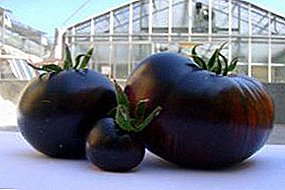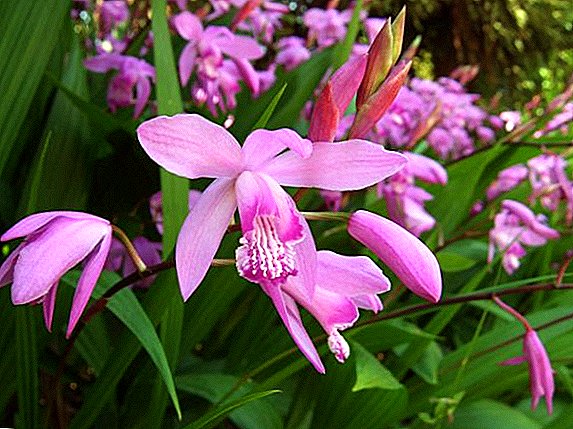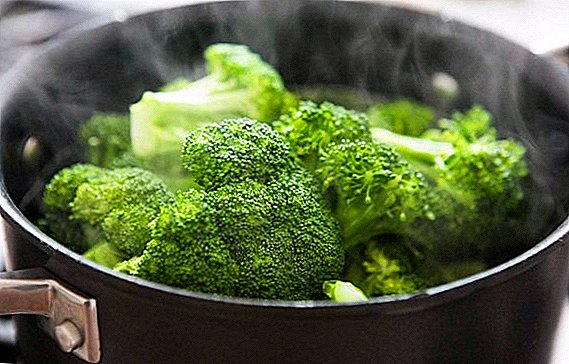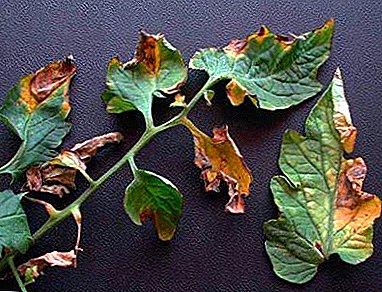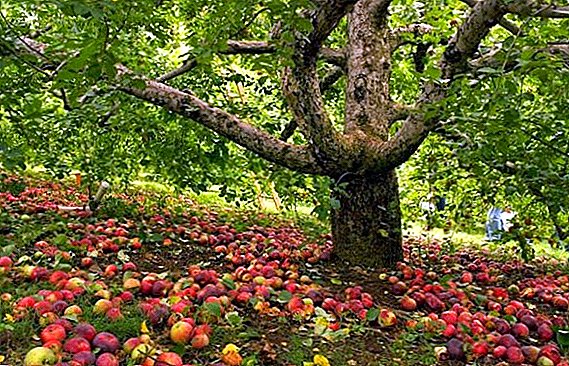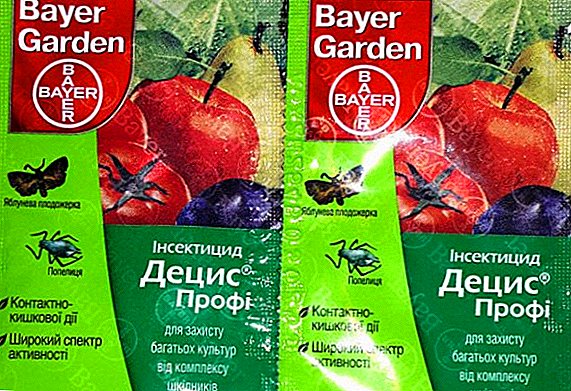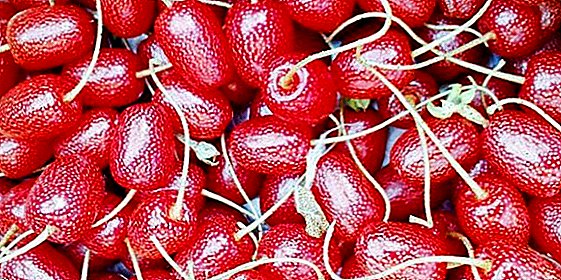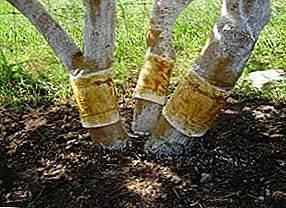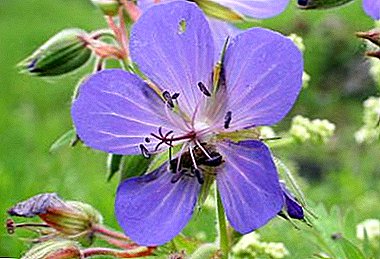
The meadow geranium (field) or crane is a bichromatic perennial flowering perennial, very rarely an annual plant, is a species of the geranium of the family Geranium.
Next, you will find out what it is, find a description and photo of the plant. In addition, it tells about how this plant differs from forest geranium, and what diseases can be affected.
Botanical description
In the meadow geranium, the stems are not branched, not numerous or even single, growing straight, branched in the upper part and covered with folded or distant hairs. The stems of the forest geranium reach a height of 40-80 cm.
The rhizome is thick but short, its length is about 10 cm. The plant has numerous basal leaves and bracts of basal leaves.
The leaves, located on the stem, have a five-fold form, while the upper ones are sessile and tripartite. Bracts are lanceolate, their length is about 15 mm.
Umbellate inflorescence, false-stemmed. The flowers are quite large, they open wide when flowering, petals about 20 mm long have purple-blue, blue-blue and purple-red shades, rounded at the top, whole and hairy at the base.
 The hairiness of flowers and stalks serves as protection from small insects.
The hairiness of flowers and stalks serves as protection from small insects.
Meadow geranium blooms in June or July, the flowering period is about 30 days, with each branch will bloom no more than 2 days.
The meadow geranium is very fruitful.
The fruit of the meadow geranium is a capsule, has a coracoid formation with an average length of 3-4 cm, ripens in August-September, after ripening the seeds are very small, spotty.
History of
Meadow geranium is found on moderately wet meadows, moist forest glades, forest edges, grows not only in deciduous, but also coniferous forests, among bushes.
Coverage of meadow geranium habitats is quite wide: the territory of Europe, Central Asia, Siberia.
Geranium name received for the similarity of the fruit with the crane beak, and translated from Greek means "crane".
Meadow geranium was widely used as a medicinal and ornamental plant at the end of the 16th century.
What is the difference between a wild gander and a forest crane?
- Habitat: forest and meadow.
- Appearance: forest geranium colors are more often purple and violet, and meadow color - blue and bluish-purple.
- Peduncles in the forest geranium sticking out, and in the meadow deviated downward.
- Forest geranium loves wetter soil and less lighted growing areas than meadow geraniums.
- The meadow geranium is superior to forest in productivity as a honey plant.
Wild geraniums are excellent honey plants.. In nature, we often encounter geraniums, both forest and meadow. They are similar at first glance and it will be quite difficult for an inexperienced person to distinguish them.
On the territory of Russia can be found up to 40 species of geraniums. Geraniums on garden and household plots are fairly easy to maintain if the soil properties and the degree of lightness are maintained, as in the wild.
Due to the variety of colors, the owner of the geranium can create a floral arrangement to your taste.
The most popular varieties of geraniums are:
- Medonos;
- Summer Skyse;
- Black Beauty.
Terry flowers of a garden grade Summer Skayz have pinkish-lavender color. This variety is distinguished by tallness, in landscape design, when planting a flower bed, it is advisable to plant it in the background, after flowering, it is worth cutting the plant completely.
If there is a desire to improve the site and plant a plant with dark foliage, then you can easily buy Black Beauty geranium, it will be suitable for the foreground flower arrangement in the garden plot.
Commercial honey harvest can provide meadow geranium, honey from geranium is dark red, with a faint aroma and a peculiar taste.
Photo of a field plant
This is what wild geranium looks like in the photo.





Landing features
Geranium is unpretentious in nature, drought-resistant. Geranium can be a place with round the clock, moderate or low light.
Choose a good soil drainage, then geraniums easier to take root.
Planting geranium costs in early spring after the end of frost. The soil before planting must be loosened or plowed.
Step-by-step instruction
- Choose a suitable place.
- Pick the right time.
- Prepare a bed: dig the ground 30-40 cm deep using fertilizer in the form of compost.
- Maintain a distance between seedlings from 20 to 65 cm.
- Make a recess for the flower.
- Place the seedling in a hole, cover it with earth and tamp the earth a little with your hand.
- Water the plant immediately after planting.
Care rules
- Watering. Despite the loyal attitude of the geranium to drought, it is advisable to monitor the watering of the plant, to prevent stagnation of water in the soil.
 Fertilizer.Every spring it is necessary to fertilize the land, enriching it with minerals, which have a beneficial effect on the growth and flowering of the plant.
Fertilizer.Every spring it is necessary to fertilize the land, enriching it with minerals, which have a beneficial effect on the growth and flowering of the plant.- Weeding. For effective and fruitful development, you need to save the flower from the neighborhood with weeds.
- Pruning. After flowering and withering flowers will need to be removed, the same should be done with dry stems to allow new shoots to grow and to please their viewers with their appearance.
- Transfer. After 3-4 years, the geranium on the site will take a fairly extensive place, in early spring you will need to transplant the plant, dividing it into several parts.
Similar care is needed for room geraniums at home.
Common diseases and pests
Often, geranium diseases are associated with errors in the maintenance of the plant, common diseases include:
- Root rot. In connection with the fungal disease, a center of root rot appears, which gradually spreads to the entire rhizome. A white or gray bloom appears on the plant, vaguely resembling a web.
- Mushroom botrutis. The stems are covered with zones of brown color, the plant becomes sluggish, dead parts of a funnel-shaped form appear on the leaves. The cause of the disease is excessive moisture.
- Bacterial disease. The causative agent is microbes.
The edges of the leaves begin to dry out, spots are found on the leaf plates. At the advanced stage the geranium falls.
- Viral disease. Viral activity affects differently, the external signs are many, it is the darkening of the leaves in spots, and the sluggishness of the plant, and the arrest of growth.
- Edema. On the plant appear bubbles filled with liquid, these places after a time begin to become brown. This entails yellowing and falling leaves and flowers. The reason is excess moisture and low temperature.
To prevent problems with the development and growth of geranium, like any other plant, prevention is important.
 For treatment, you need to create the most favorable environment., remove the affected areas of the plant, normalize the soil, lighting, watering, establish quality drainage, take fertilizer seriously and selectively.
For treatment, you need to create the most favorable environment., remove the affected areas of the plant, normalize the soil, lighting, watering, establish quality drainage, take fertilizer seriously and selectively.
The most common pests of geraniums are whitefly, spider mites and aphids. They may appear due to very dry air.
In the fight against pests the best means are insecticidesBefore applying them, it is necessary to thoroughly wash the geranium with running water.
An improvised remedy is considered to be aspirin, one tablet is diluted in 8 liters of water and spray the plant, repeat the procedure after three weeks.
Breeding features
Reproduction of geraniums can occur by seed, shoots, cuttings, by dividing the bush during transplantation.
When planned transplantation is necessary to divide the bush into parts, this will be a convenient way of reproduction. In this case, you will need to do pruning.
- By propagating seeds, geranium is not so attractive for flower growers, and this method is less popular. In this case, the soil should be composed of sand and humus and be loose.
Two weeks before the planned reproduction, shoots should be made along the entire length of the shoot the round cuts. After separation from the main bush, these processes root well and take root.
- Geranium breeds efficiently when grafting. The main condition is a high degree of illumination and high temperature. This procedure is performed both in spring and autumn. It should be done in parallel and pruning. The root system of the cuttings during planting is formed without any problems.
For full flowering should be used as a fertilizer potassium.
While caring for geraniums, it is worth refusing from spraying and artificially humidifying the air.
 The best thanks to your favorite plant will be proper care and well-organized wintering.
The best thanks to your favorite plant will be proper care and well-organized wintering.
Geranium can be dug out of open ground and hang up roots at a temperature of +7 +15 degrees Celsius. It will be necessary to moisten the roots, monitor the condition of the plant.
Along with careful storage during the winter, geranium can survive low temperatures, remaining in the ground. Everything will depend on the variety and type of geranium.
Geranium is endowed with many useful properties., allowing to use its grass and roots as a medicine as an anesthetic, hemostatic, antibacterial agent.
It has an aesthetically pleasing appearance, does not burden the gardener with care and maintenance at home, she is pleased with the look, cleans the air, charges with positive energy.


 Fertilizer.Every spring it is necessary to fertilize the land, enriching it with minerals, which have a beneficial effect on the growth and flowering of the plant.
Fertilizer.Every spring it is necessary to fertilize the land, enriching it with minerals, which have a beneficial effect on the growth and flowering of the plant.